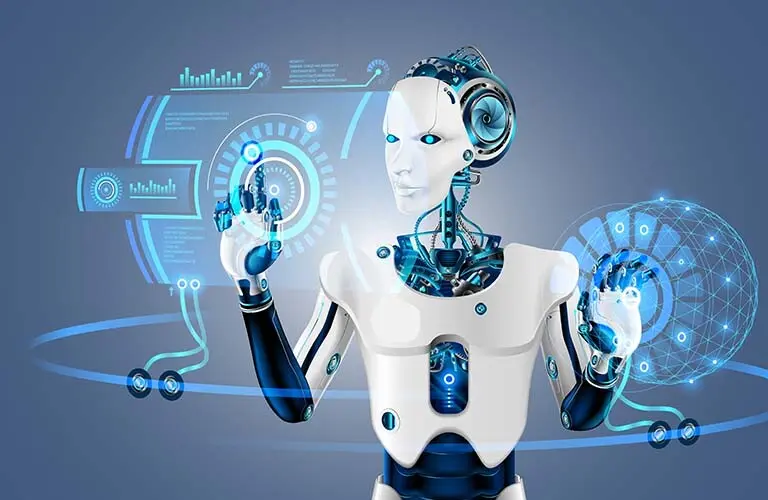
The dawn of Artificial Intelligence (AI) heralded a new chapter in the annals of technology. AI has revolutionized industries, transformed businesses, and is poised to redefine the contours of our daily lives. As we cast our gaze toward 2033, it becomes imperative to understand the trajectory of the global AI market and the implications it holds for the future.
The Evolution of AI: A Retrospective Glance
Artificial Intelligence, once a fixture of science fiction, has permeated our reality at an unprecedented pace. From rudimentary machine learning algorithms to sophisticated neural networks, AI has evolved to emulate cognitive functions that humans associate with other human minds, such as learning and problem-solving.
Current State of the Global AI Market
As of today, the global AI market is a melting pot of innovation and competition. Industries ranging from healthcare to finance have leveraged AI to optimize operations, reduce costs, and enhance customer experiences. AI-powered solutions in diagnostics, fraud detection, and personalized recommendations are becoming the norm, setting the stage for a more intelligent and efficient future.
Key Drivers of AI Growth
The exponential growth of the AI market is fueled by several key factors:
- Data Explosion: The digital universe is expanding, with an avalanche of data from various sources. AI thrives on this data, learning and evolving with each byte it processes.
- Computational Power: Advancements in computing, such as quantum computing, are expanding the horizons of AI’s capabilities.
- Innovation and Investment: There is a surge in AI research and development, with significant investments from both public and private sectors.
- Integration into Products and Services: AI is being integrated into products and services, making it indispensable in our digital ecosystem.
Challenges and Considerations
Despite the promise of AI, there are challenges and ethical considerations that must be addressed:
- Privacy: AI’s dependence on data raises concerns about privacy and data protection.
- Bias: Machine learning algorithms can perpetuate biases if not carefully designed.
- Job Displacement: AI could automate tasks traditionally performed by humans, leading to job displacement in certain sectors.
Forecasting the Future: AI by 2033
Looking ahead to 2033, we anticipate several trends and developments:
- Ubiquitous AI: AI will become more pervasive, seamlessly integrated into everyday objects and activities.
- Cognitive AI: Advancements in AI will lead to systems capable of more human-like reasoning and interactions.
- Regulation and Governance: We will likely see more robust frameworks for the ethical use of AI.
- New Job Creation: While AI may displace certain jobs, it will also create new categories of employment centered around the AI economy.
The Role of AI in Shaping Industries
AI will continue to be a transformative force across various sectors:
- Healthcare: AI will drive personalized medicine, with treatments tailored to individual genetic profiles.
- Transportation: Autonomous vehicles will become more prevalent, potentially transforming the logistics and transportation industries.
- Manufacturing: AI will enable smart manufacturing with predictive maintenance and real-time optimization.
The AI Market Landscape in 2033
By 2033, the global AI market is expected to be characterized by:
- Market Consolidation: We may see a consolidation of AI enterprises, with a few dominant players emerging.
- Cross-Industry Collaborations: Partnerships between disparate industries will become common as they seek to leverage AI for innovation.
- Global AI Hubs: Certain regions will emerge as global AI hubs, attracting talent and investment.
Preparing for the AI Future
Businesses and individuals must prepare for the AI future by:
- Investing in AI Literacy: Understanding AI will become a critical skill across all levels of employment.
- Fostering Innovation: Encouraging a culture of innovation will be key to staying ahead in the AI-driven market.
- Ethical AI Practices: Developing and adhering to ethical guidelines for AI use will be crucial.
- To harness the full potential of AI by 2033, we must also consider the global economic and societal impacts. The democratization of AI technology will play a critical role in ensuring equitable benefits across different regions and communities. We can expect international collaborations aimed at sharing AI knowledge and resources, reducing the digital divide that could otherwise widen with AI advancements.
· Economic Impact of AI
- AI’s contribution to the global economy will be profound. According to some estimates, AI could add trillions to the global GDP by 2033, acting as a catalyst for economic growth and productivity. However, this economic boon must be managed to ensure that the wealth generated by AI advancements is distributed fairly, fostering a more inclusive economic landscape.
· Societal Changes
- The societal changes brought about by AI will be equally transformative. Education systems will likely evolve to prioritize critical thinking and creativity, skills that AI cannot easily replicate. Healthcare could become more preventative and less reactive, as AI enables the analysis of vast datasets to predict health issues before they manifest.
· AI and the Environment
- AI will also have environmental applications, potentially playing a pivotal role in combating climate change. By optimizing energy usage in industries and enabling smarter resource management, AI could help reduce the carbon footprint of human activities.
· Embracing a Responsible AI Era
- As we move toward 2033, the call for responsible AI will become louder. We will need to balance innovation with vigilance to ensure AI technologies are developed and deployed responsibly. This includes addressing issues of AI safety, ensuring systems are secure against cyber threats, and making sure that AI behaves predictably in high-stakes scenarios.
In Conclusion
The journey to 2033 will be filled with milestones and challenges as the AI saga unfolds. We stand at the cusp of an era where Artificial Intelligence could redefine what it means to live, work, and coexist. Embracing AI’s potential while steering its trajectory with wisdom and foresight will ensure that the future is not only bright but also benevolent and just for all.


